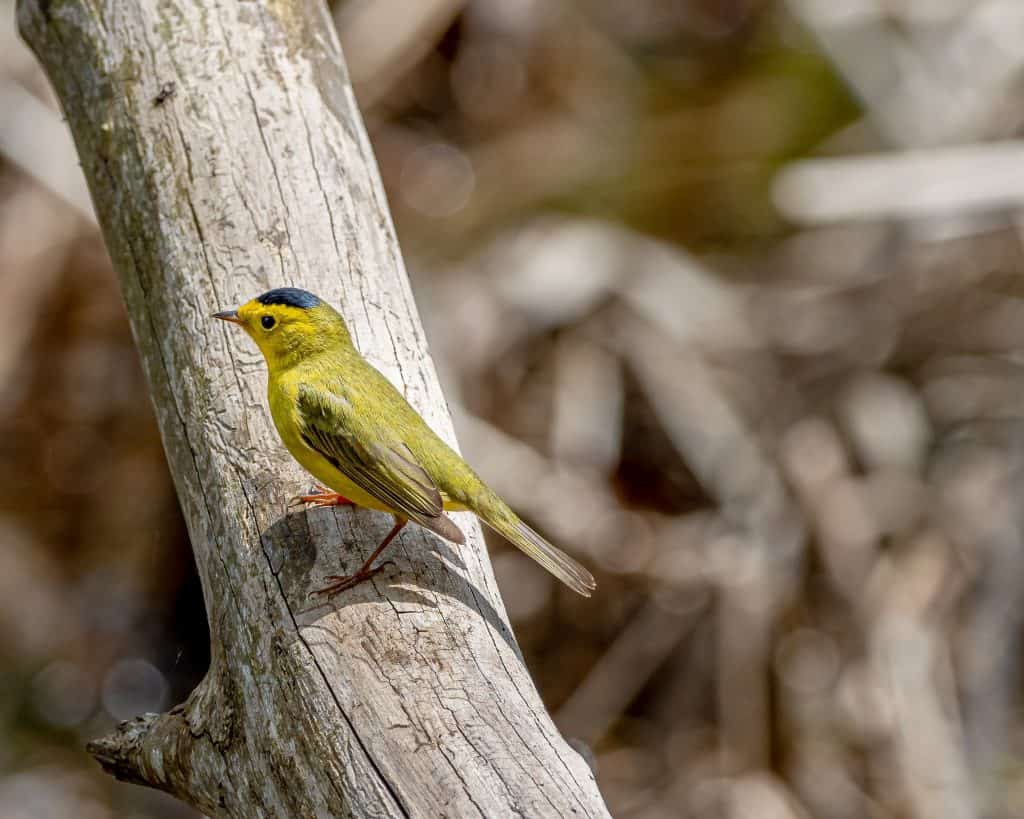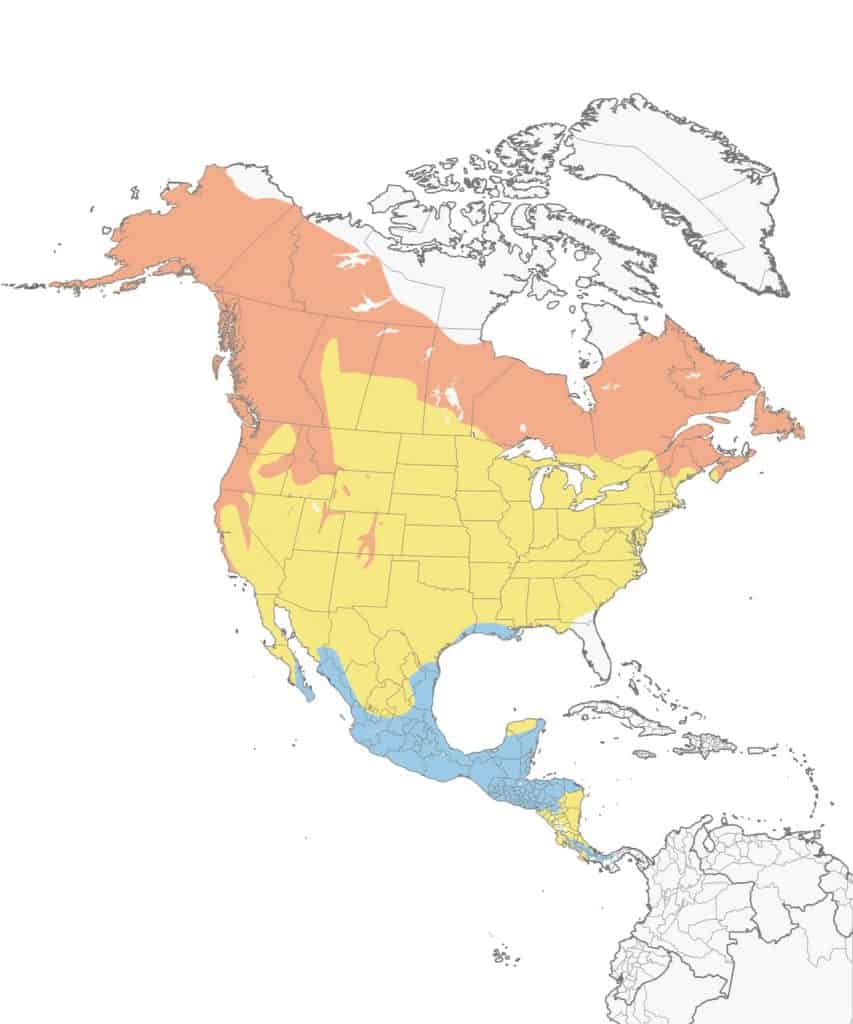
Appearance: Wilson’s warbler is a very small bird about 4-5″ long. They’re bright yellow with subdued tones of the olive-yellow outside of the face, a black cap (looks a bit like a toupe), and black wings with white stripes. Their bills are short and pointy, eyes dark black.
The female is the same except the cap is light charcoal.
Diet: Insects, especially larval insects, spiders, and the sugary liquid from scale insects (tiny insects that feed on plants).
Feeder food: Unlikely to visit a feeder.
Habitat: Forested edges, shrubby thickets, and often young conifer trees.
Nesting: Wilson’s warblers place their 3-4″ nest on the ground. Sometimes nests are in shrubs in which case they are a bit bigger. They have 1-2 broods/season and 2-7 eggs/brood that are white/ivory with reddish/brown specks. Incubation is for 10-13 days and juveniles leave the nest at about 9-11 days.
Migration: Wilson’s warblers are migrators. In the spring they migrate north to breed and raise their young. Then in the fall, they migrate back south for the winter.
Breeding range: Alaska, Washington, Oregon, Idaho, western Montana, northern and the coast of California, as well as irregular patches in Wyoming, Utah, Colorado, New England, and Canada’s provinces (except Nunavut).
Winter range: Southeast Texas, southern Louisiana, and Mexico.
Range Map


